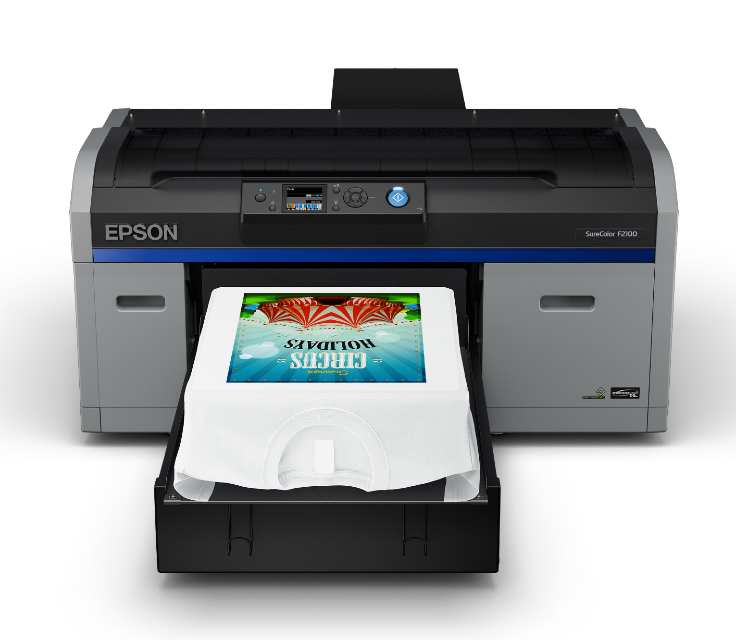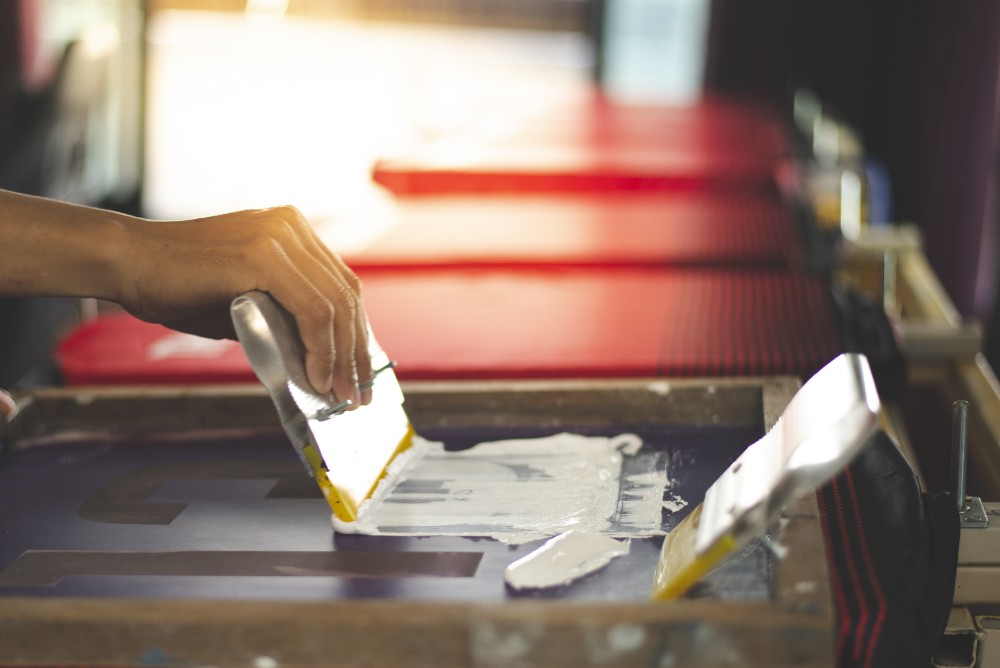What we wear represents who we are. Consumers are always on the lookout for clothes that speak to their identity. Whether it’s a favorite TV show, brand, or just about expressing a certain aesthetic, designers have a large market where they can put their creativity to work and create garments that customers will go crazy for.Â
Creating a design is only half the battle. You then need to figure out how to get that design on the garment.Â
If you’re interested in designing and printing t-shirts and clothing, you’ve likely heard the terms DTG printing and screen printing. Both of these methods are ways in which you can get a design that you’ve created on your computer onto fabric.Â
But what exactly are DTG and screen printing, and what are the main differences in use? Let’s delve into the details about what each method is, how it works, and the pros and cons so that you can choose the way that’s best for your business.Â
What is DTG? 
DTG stands for direct-to-garment and is a printing process that utilizes the same technology that a regular inkjet printer has, but with clothing. A DTG printer can transfer a digital image or graphic file onto a blank piece of fabric.Â
This newer t-shirt printing method has gained popularity over the last few years thanks to advances in the technology to cut down on time, cost, and an increase in the quality of the final product.Â
DTG printing works best for elaborate designs, thanks to its precision focus on recreating the graphic file, as well as models that feature many different colors.Â
The best use of DTG printers is on small batches of custom shirts, like 10 or less. The printer allows you to accept smaller orders from customers and still remain cost-effective.
DTG Printing Pros:
- No limit on the number of colors. You can print bright, intricately colored and detailed images without worrying about smudging or having a narrow choice of colors to choose from.Â
- Cost-effective for smaller batches. Reduced manufacturing overhead (and time) allows businesses to address custom and smaller orders that they may otherwise not be able to fulfill.
- Minimal setup time. After the initial setup and configuration, there’s no other setup you need to print a design. You can quickly move from one project to the next without stopping to readjust.
- Consistent designs. Since the printing and design communication is digital, every time you print a design, it will be the same as the previous one.Â
- Water-based ink. DTG printing uses water-based ink, which is more eco-friendly material for an overall more sustainable production process.
DTG Cons:
- Light-ink on dark fabric. Some DTG printers may require multiple passes when printing light ink on dark fabrics, to produce desired results.
- Single item production. DTG printers can only print one garment at a time, line by line, and is a slower production process if you have a large order.
- Expensive. While the cost of equipment has gone down slightly, you’re looking at a significant upfront investment on the printer and ink so this is something to consider for start-ups.Â
- Modest ink penetration. DTG printers work much faster than screen printing, which means the ink doesn’t saturate as deep into the fabric.
- Pretreating is required. This can be a small (or large) additional cost, depending on the amount of output your business is doing.
What is Screen Printing?
Screen printing is one of the most popular methods to print on fabric and is the one that most people think of for garment printing since it’s the more traditional process.Â
If:
You ever went to a summer camp or boy’s and girl’s club, you may have done some “silk-screening” – this is the same premise.
Screen printing requires you to push ink through a woven mesh stencil, laid over the fabric. You need to apply each color separately with its own screen. This means that for every design you have, you’ll need to break it down into layers by color and create a unique filter for each.
The screen printing method is best for designs that feature bold graphics or typographical designs, with only a few colors.Â
Because of the material overhead, and breaking down each design into separate screens, this method is easy for larger batches of custom clothing pieces.
Screen Printing Pros:
- Durable, saturated designs. Because each color ink pushes through the screen, it fully saturates the garment, creating a lasting image that won’t fade.
- Cost-effective for large batches. If you consistently run large quantities of the same design, the screen printing method is more economical for your production process. You can create the screens needed once, but be able to produce hundreds of copies with them.
- Wide-range of fabrics. You’re not limited to only materials that you can push through the printer slot on a DTG. You can use a screenprint on anything of any size.
Screen Printing Cons:
- High production overhead. Screen printing is a much more labor-intensive process. You need to create the design, divide it into color layers, and then create a screen for each segment before you can even begin printing your first shirt.Â
- Not recommended for multi-color designs. If your design has several colors, that means you’ll need even more screens – one for each color to be exact. That means more labor, materials, and overhead to create it. Screen printing is not very cost-effective in these situations.
- Complicated designs. The nature of the screen printing process itself, with its need for multiple screens and layering, can pose a problem with intricate designs or those that have a lot of colors.
There you have it: DTG printing vs. screen printing explained! Now the question becomes, which one is right for your business?
The answer is it really depends on the specifics of your custom printing project or business. The most significant factors to consider are the typical designs you’d like to print and your average or expected production run.
Just remember: simpler designs with graphics or text, and few colors are better for screen print production and is more cost-effective for large runs. While DTG printing can handle more intricate and elaborate designs, with multiple colors, but works best on light-colored fabric, and on smaller production runs.
So, which printing method is right for you?
Questions? Get in touch with an Imaging Spectrum representative at 214-342-9290 or email inkjet@imagingspectrum.com



0 Comments